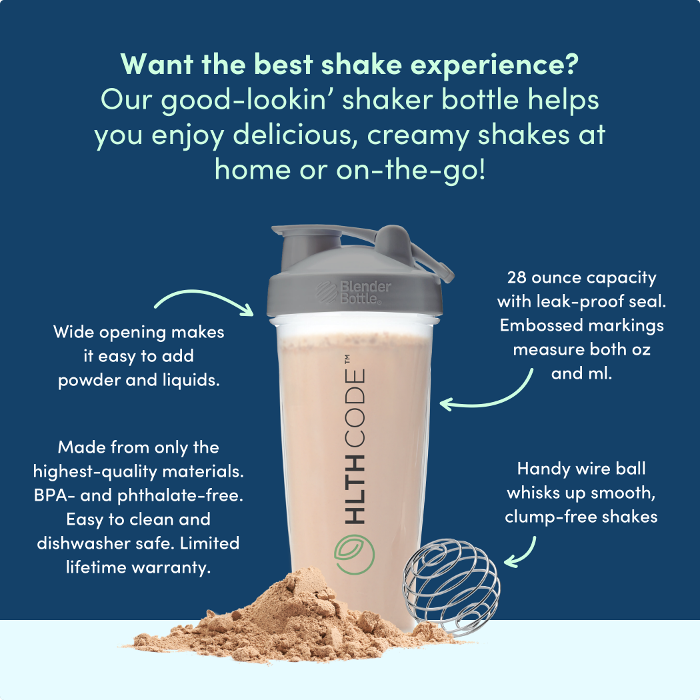Can You Reverse Metabolic Syndrome Naturally?

Metabolic syndrome—a cluster of conditions including insulin resistance, abdominal obesity, and high blood pressure—is driving epidemics of chronic disease. While conventional advice focuses on moderate diet and exercise, a growing body of research suggests that low-carb and ketogenic diets directly target the metabolic root causes. This article breaks down what metabolic syndrome is, why it’s dangerous, and how low-carb approaches offer a powerful and sustainable path to supporting reversal of metabolic syndrome.
What Is Metabolic Syndrome?
Metabolic syndrome is a constellation of risk factors that dramatically increase the likelihood of developing type 2 diabetes, heart disease, stroke, and even cancer.
According to the National Heart, Lung, and Blood Institute, metabolic syndrome is diagnosed when at least three of the following five conditions are present[1]:
- Abdominal obesity: Waist >40 inches (men), >35 inches (women)
- Elevated triglycerides: ≥150 mg/dL or on medication
- Low HDL cholesterol: <40 mg/dL (men), <50 mg/dL (women)
- High blood pressure: ≥130/85 mmHg or on medication
- Elevated fasting blood glucose: ≥100 mg/dL or on medication
Another term for this condition is insulin resistance syndrome, highlighting the hormone imbalance at its core.
Insulin Resistance: The Metabolic Domino
Insulin is the hormone that helps shuttle glucose (sugar) from your bloodstream into your cells. But in metabolic syndrome, this process becomes broken. The body becomes “resistant” to insulin, and blood sugar levels rise. In response, the pancreas pumps out more insulin in a futile effort to restore balance[2].
This hyperinsulinemia can persist for years before full-blown type 2 diabetes emerges. Along the way, it wreaks havoc:
- Promotes fat storage (especially visceral fat)
- Increases inflammation
- Worsens blood lipids (triglycerides up, HDL down)
- Elevates blood pressure
- Accelerates atherosclerosis
Metabolic syndrome isn’t just one condition—it’s a slow-moving, system-wide collapse of metabolic function.
Causes of Metabolic Syndrome
While genetics can play a role, the modern Western lifestyle is the primary culprit:
- Refined carbohydrate intake (white bread, sugar, processed foods)[3]
- Physical inactivity[4]
- Chronic stress and poor sleep[5]
- Abdominal obesity (especially visceral fat)[6]
- Overeating ultra-processed foods[7]
All of these factors contribute to worsening insulin resistance and systemic inflammation.
The Low-Carb Solution: How It Works
A low-carb or ketogenic diet directly targets the root problem: carbohydrate intolerance and insulin dysregulation.
When carbohydrate intake is reduced, blood glucose levels drop. This lowers insulin levels, which in turn:
- Promotes fat burning
- Improves insulin sensitivity
- Reduces triglycerides
- Raises HDL (the “good” cholesterol)
- Lowers blood pressure
In contrast to simply managing symptoms, a low-carb diet helps restore metabolic flexibility—the body’s ability to switch efficiently between fuel sources.
Clinical Evidence: Reversing Metabolic Syndrome with Low-Carb Diets
The most compelling long-term study comes from Virta Health, which followed patients with type 2 diabetes using a well-formulated ketogenic diet[8]:
- 94% reduced or eliminated insulin
- 12% average weight loss
- 1.3% reduction in HbA1c
- Significant drop in triglycerides and rise in HDL
- Over 60% reversal of metabolic syndrome markers
Another meta-analysis of 13 randomized controlled trials found that low-carb diets produced greater improvements in all five metabolic syndrome markers compared to low-fat diets[9].
A 2022 paper in Frontiers in Nutrition concluded that carbohydrate restriction is “the most effective dietary strategy for reducing all features of metabolic syndrome.”[10]
Health Risks of Untreated Metabolic Syndrome
Left unaddressed, metabolic syndrome leads to severe downstream consequences:
- Heart Disease
Elevated triglycerides, low HDL, high blood pressure, and insulin resistance form the perfect storm for atherosclerosis and coronary artery disease[11].
- Type 2 Diabetes
Most people with metabolic syndrome eventually progress to type 2 diabetes unless they intervene early[12].
- Liver Disease
Non-alcoholic fatty liver disease (NAFLD) is tightly linked to insulin resistance and can progress to liver scarring and cirrhosis.
- Cognitive Decline
Insulin resistance is increasingly tied to Alzheimer’s disease—sometimes referred to as “type 3 diabetes”[13].
- Cancer
Chronic inflammation and insulin-driven growth signaling increase the risk of cancers, particularly breast and colon[14].
Top 10 Strategies to Reverse Metabolic Syndrome
- Adopt a Low-Carb or Ketogenic Diet
Prioritize nutrient-dense, whole foods low in carbohydrates:
- Eggs, meat, fatty fish
- Healthy fats: olive oil, avocado, coconuts
Multiple studies show low-carb diets significantly improve insulin resistance, blood glucose, and lipid markers[15][16].
- Engage in Regular Exercise
Aerobic activity and resistance training both improve insulin sensitivity and lipid metabolism. Aim for at least 150 minutes/week[17].
- Lose Excess Weight
Losing just 5–10% of body weight can dramatically reduce blood pressure, triglycerides, and fasting glucose[18].
- Improve Sleep
Sleep deprivation worsens insulin resistance and appetite regulation. Aim for 7–8 hours per night[19].
- Manage Stress
Chronic cortisol elevation promotes fat storage and high blood sugar. Religious observation, mindfulness, breathing exercises, and meditation all help[20].
- Quit Smoking
Smoking increases inflammation and damages blood vessels, compounding metabolic syndrome risk[21].
- Monitor Blood Pressure and Lipids
Home monitoring, lab testing, and physician oversight are essential to track progress and intervene if needed.
- Optimize Fasting Glucose
Low-carb diets often eliminate the need for glucose-lowering drugs like metformin[22]. Track trends in fasting glucose and HbA1c.
- Consider Targeted Supplementation
Nutrients like magnesium, omega-3s, berberine, and vitamin D may support insulin function and inflammation reduction[23].
- Stay Consistent
Metabolic healing doesn’t happen overnight. But low-carb diets are associated with long-term sustainability and appetite control when well-formulated[24].
FAQs
Q1: Is metabolic syndrome reversible?
Yes. Studies show that with weight loss, carbohydrate reduction, and lifestyle changes, most metabolic syndrome markers can be normalized.
Q2: Is a low-carb diet safe long term?
When based on whole foods and healthy fats, low-carb diets are safe and effective for long-term metabolic health and weight maintenance[25].
Q3: What’s the difference between keto and low-carb?
Keto is a very low-carb diet (typically <50g/day) aimed at inducing ketosis. Low-carb diets allow more flexibility (50–130g/day), but still reduce insulin load.
Q4: Can I reverse metabolic syndrome without medications?
Yes. Many people achieve full remission with lifestyle interventions alone—especially low-carb eating, exercise, and stress management.
Q5: Does fat intake worsen metabolic syndrome?
Not when carbohydrates are reduced, and the right fats consumed. Healthy fats (olive oil, avocado, fatty fish) are protective. It’s excess carbohydrates and processed seed oils that pose greater risk.
Q6: What tests should I monitor?
Track fasting glucose, triglycerides, HDL, blood pressure, and waist circumference. Ask your doctor to also monitor HbA1c and insulin levels if possible.
Conclusion
Metabolic syndrome is a silent but dangerous condition affecting millions—and it’s largely preventable and reversible. At its core lies insulin resistance, a dysfunction best addressed by reducing the insulin burden from refined carbohydrates.
Low-carb and ketogenic diets offer a root-cause, evidence-backed solution—not just symptom management. When paired with smart lifestyle habits, this approach can restore metabolic health, reduce chronic disease risk, and improve quality of life.
References
-
- Grundy SM, et al. Circulation. 2005;112(17):2735–2752.
- Reaven GM. Diabetes Care. 1991;14(2):195–202.
- Ludwig DS, et al. JAMA. 2018;319(5):492–493.
- Booth FW, et al. Compr Physiol. 2012;2(2):1143–1211.
- Chrousos GP. Nat Rev Endocrinol. 2009;5(7):374–381.
- Després JP. Can J Cardiol. 2012;28(6):642–652.
- Mozaffarian D, et al. N Engl J Med. 2011;365(25):2361–2370.
- Hallberg SJ, et al. Front Endocrinol. 2019;10:348.
- Snorgaard O, et al. BMJ Open Diabetes Res Care. 2017;5:e000354.
- Saeedi P, et al. Front Nutr. 2022;9:946982.
- Mottillo S, et al. J Am Coll Cardiol. 2010;56(14):1113–1132.
- DeFronzo RA. Diabetes. 2010;59(9):2103–2113.
- Yaffe K, et al. Arch Neurol. 2007;64(1):98–103.
- Calle EE, et al. N Engl J Med. 2003;348(17):1625–1638.
- Feinman RD, et al. Nutrition. 2015;31(1):1–13.
- Volek JS, et al. Lipids. 2009;44(4):297–309.
- Knowler WC, et al. N Engl J Med. 2002;346(6):393–403.
- Wing RR, et al. Arch Intern Med. 2010;170(17):1566–1575.
- Knutson KL, Van Cauter E. Ann N Y Acad Sci. 2008;1129:287–304.
- Rosenzweig S, et al. Altern Ther Health Med. 2007;13(5):36–38.
- Willi C, et al. JAMA. 2007;298(22):2654–2664.
- UKPDS Group. Lancet. 1998;352(9131):837–853.
- Cicero AFG, et al. Arch Med Sci. 2015;11(2):409–418.
- Yancy WS, et al. Ann Intern Med. 2004;140(10):769–777.
- Longo R, et al. Nutrients. 2020;12(11):3305.
This article is for informational and educational purposes only. It is not, nor is it intended to be substitute for professional medical advice, diagnosis, or treatment and should never be relied upon for specific medical advice.



















